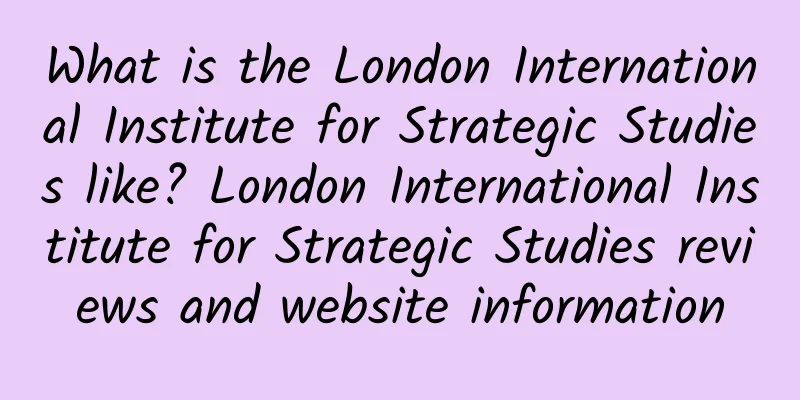What is W3C? W3C reviews and website information

|
What is W3C? The World Wide Web Consortium (W3C) is a standard-setting organization in the Web field, founded in 1994. So far, W3C has released more than 200 Web technology standards and implementation guidelines, including HTML standards, XML standards, etc., which effectively promoted the mutual compatibility of Web technologies and played a great role in promoting the development of the Internet. Website: www.w3.org W3C: Global Standards Setter Shaping the Future of the InternetWith the rapid development of Internet technology, we enjoy convenient online services, rich and colorful content, and efficient communication methods. However, behind all this, there is a crucial organization - the World Wide Web Consortium (W3C). As a standard-setting organization in the Web field, W3C has been committed to promoting the development of Internet technology and ensuring the openness, accessibility and interoperability of the global network environment since its establishment in 1994. The official website of W3C is www.w3.org . It is not only an important source for global developers to obtain the latest Web technology specifications, but also a core platform for promoting Internet innovation and cooperation. This article will explore the historical background, core mission, technical achievements of W3C and its profound impact on the development of the Internet. Origin and Development of W3CThe story of W3C began in 1994, when it was founded by Tim Berners-Lee, known as the "Father of the World Wide Web." At that time, the Internet was in its infancy, and various technical specifications and protocols emerged one after another. However, the lack of unified standards led to frequent compatibility issues, which seriously hindered the popularization and development of the Web. In order to meet this challenge, Tim Berners-Lee, together with the Massachusetts Institute of Technology (MIT) and other industry partners, established W3C, aiming to promote the healthy development of the Web by formulating globally applicable technical standards. Since its inception, W3C has established its core goal: to promote the standardization of Web technologies and ensure seamless collaboration between different devices, browsers and services. After nearly three decades of development, W3C has grown from a small non-profit organization to an international authoritative organization with more than 400 members, including technology giants, academic research institutions, government organizations and individual developers. W3C's Core Mission and ValuesAs the developer of Web technology standards, W3C's core mission can be summarized as follows:
These core values not only guide the work direction of W3C, but also have a profound impact on the ecological construction of the entire Internet industry. For example, the Web Content Accessibility Guidelines (WCAG) launched by W3C has become the gold standard for improving website accessibility worldwide. W3C's technical achievements and influenceTo date, W3C has published more than 200 Web technology standards and implementation guidelines, covering everything from infrastructure to application layer. The following are some of the milestone technical achievements and their impact on the Internet: HTML: The fundamental language of web contentHyperText Markup Language (HTML) is the core language for building Web pages. W3C has defined the structured expression of Web content by publishing a series of standards such as HTML 4.01 and HTML5. The launch of HTML5 is particularly noteworthy, as it introduces multimedia support, offline storage, and richer interactive functions, greatly improving the functionality and performance of Web applications. CSS: The Art of Visual ExpressionCascading Style Sheets (CSS) are responsible for defining the appearance and layout of web pages. The CSS standard released by W3C not only simplifies the web design process, but also separates content from presentation, improving development efficiency and user experience. XML: A bridge for data exchangeExtensible Markup Language (XML) is a language used to describe data structures. By developing XML standards, W3C provides a reliable solution for cross-platform and cross-system data exchange. The widespread application of XML has promoted the development of e-commerce, e-government and other fields. HTTP: a channel for information transmissionHyperText Transfer Protocol (HTTP) is the core protocol for Web communication. W3C participated in the formulation of standards such as HTTP/1.1 and HTTP/2, which significantly improved the speed and efficiency of Web data transmission. Other important standardsIn addition to the core standards mentioned above, W3C has also made important progress in many areas, such as:
These technical standards not only lay the technical foundation for the modern Internet, but also provide solid guarantees for future innovation and development. W3C's operating mechanism and global influenceAs an international non-profit organization, W3C's operating mechanism reflects a high degree of transparency and collaboration. Its main work processes include:
This open standard-setting process attracts participants from all over the world and forms a strong community force. Currently, W3C has multiple offices around the world, covering major regions such as North America, Europe, and Asia, to ensure that its work is close to the actual needs of different regions. In addition, W3C also actively cooperates with other international organizations, such as the International Telecommunication Union (ITU) and the Institute of Electrical and Electronics Engineers (IEEE), to jointly promote the global development of information technology. This multi-party collaboration model further expands W3C's influence and makes it an important participant in global Internet governance. Challenges and Future Prospects for W3CDespite the remarkable achievements of the W3C over the past decades, it still faces many challenges:
In the face of these challenges, W3C is actively exploring new solutions, for example, by strengthening cooperation with the developer community to respond to market needs more quickly, and by introducing more diverse participation mechanisms to improve the fairness and transparency of the decision-making process. Looking ahead, W3C will continue to play a leading role in Web technology standardization and promote the development of the Internet in a more open, secure and intelligent direction. Whether it is building the next generation of Web applications or solving the digital divide problem, W3C will play an indispensable role. ConclusionAs a standard-setting organization in the Web field, the World Wide Web Consortium (W3C) not only shapes the technical framework of the modern Internet, but also provides a platform for global developers to create the future together. From HTML to CSS, from XML to HTTP, each standard is based on countless wisdom and efforts. It is the existence of these standards that makes our lives more convenient, efficient and colorful. If you are interested in Web technology, you may visit the official website of W3C www.w3.org to learn more about this dynamic organization and its fruitful achievements. Whether you are a developer, designer or ordinary user, W3C's efforts are invisibly changing your world. |
<<: What is the Penang Bar Association like? Penang Bar Association reviews and website information
>>: What is TJX Companies like? TJX Companies reviews and website information
Recommend
What is the Montreal Impact like? Montreal Impact review and website information
What is the Montreal Impact website? Montreal Impa...
How to make braised turbot Braised turbot step by step tutorial
Turbot is a common marine fish food. It has a fat...
What is the German Federal Ministry of Education and Research like? German Federal Ministry of Education and Research reviews and website information
What is the website of the German Federal Ministry...
The efficacy and function of Hami melon
Hami melon is a summertime delicacy that is the s...
What is Rodong Sinmun like? Rodong Sinmun reviews and website information
What is the website of Rodong Sinmun? Rodong Sinmu...
What is the Florence Conservatory like? Florence Conservatory reviews and website information
What is the website of Florence Conservatory of Mu...
What is Elizabeth Taylor like? Elizabeth Taylor reviews and website information
What is Elizabeth Taylor's website? Elizabeth ...
Taboos and precautions for eating oranges
Orange is one of the most commonly eaten fruits i...
What is Eastman Kodak Company like? Eastman Kodak Company reviews and website information
What is the website of Eastman Kodak Company? East...
What are the benefits of eating watermelon? What are the benefits of eating watermelon?
Everyone eats watermelon and loves to eat it, but...
Nutritional value and cooking methods of pig blood
Pig blood, also known as blood tofu, is a common ...
How is the Japan Foundation? Japan Foundation reviews and website information
What is the Japan Foundation website? The Japan Fo...
What are the benefits of eating black fungus?
Black fungus is a very common food. It contains a...
What is Kicker Magazine like? Kicker Magazine reviews and website information
What is the website of Kicker Magazine? Kicker (ki...
What are the effects of Maka wine? What are the effects and functions of Maka wine?
Maka is a small round radish that contains a lot ...









